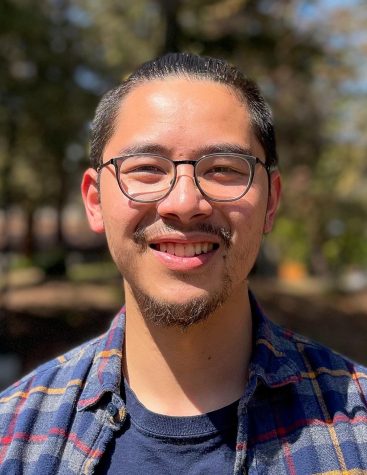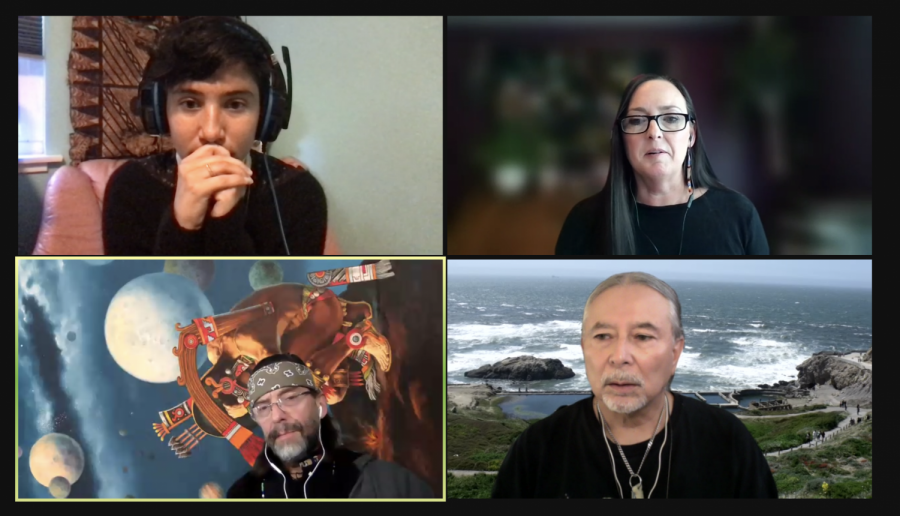Native American and Indigenous panel discuss reckoning with colonialism
Panel of Native American and Indigenous heritage speakers in the fourth installment of De Anza College’s mulitracial panel series “Our Histories, Our Experiences, Our Lives: From Learning to Collective Action”
Indigenous speakers shared the broadly forgotten history of their lineages in the fourth installment of De Anza College’s multiracial panel series “Our Histories, Our Experiences, Our Lives: From Learning to Collective Action” on May 21.
Meghan Kensler, a Native American Studies professor and descendant of the Cheyenne River Sioux Tribe, said eradicating Indigenous peoples and their cultures was painful and deliberate.
“For native societies, there is a spiritual or religious attachment to a specific land,” Kensler said. “Our ceremonies and feelings of home are connected to a specific place, so when that land is lost, that’s an impact that continues to affect us today.”
She added that European settlers used laws to justify dispossessing native peoples of their land. These policies included the Indian Removal Act of 1830, the reservation system, and then the further carving up of reservations to open up settlement land as the country grew.
Gregg Castro, a member of the Salinan tribe with a mix of Ramaytush and Rumsen, moved to San Jose in the 1950s after his family could no longer sustain themselves in their homeland. He said cultural erasure was just as significant as the physical loss of life.
“Cultural genocide is just as tragic and traumatizing as the physical part because our people do not make those artificial distinctions,” Castro said. “The physical and spiritual parts of our culture are inextricably intertwined, so when you take away our spirit, you take away who we are, and that is a death.”
Castro added that restricting Indigenous identity by requiring a minimum percentage of native blood in blood quantum laws further erased Indigenous culture.
“The concepts of mixed heritage or blood quantum laws didn’t come from us,” Castro said. “Those were attempts by colonizers to ‘kill the Indian’ but ‘save the man.’”
Kensler said that blanket terms like “Indian” and “Native American” also undermine the diversity of Indigenous culture, which once consisted of hundreds of tribal nations with possibly thousands of dialects.
Amanda Sullivan Lee, a Pacific Islander history professor of Tongan descent, said the colonization of the Polynesian islands mirrored that of North America, as settlers imposed a racial hierarchy and exploited the native population.
“You’re not a bad person if you want to take a vacation to the islands,” Lee said. “But try and learn something about the place you’re going to and look for organizations that are doing revitalization work and cultural maintenance. Know that it is sacred and ancestral land that you are standing on.”
The recording of the event and upcoming panels can be found here.

Kevin Vu Nguyen is a returning student journalist and editor at La Voz, formerly serving as Editor-in-Chief. He is a proud alum of both De Anza and Foothill...



